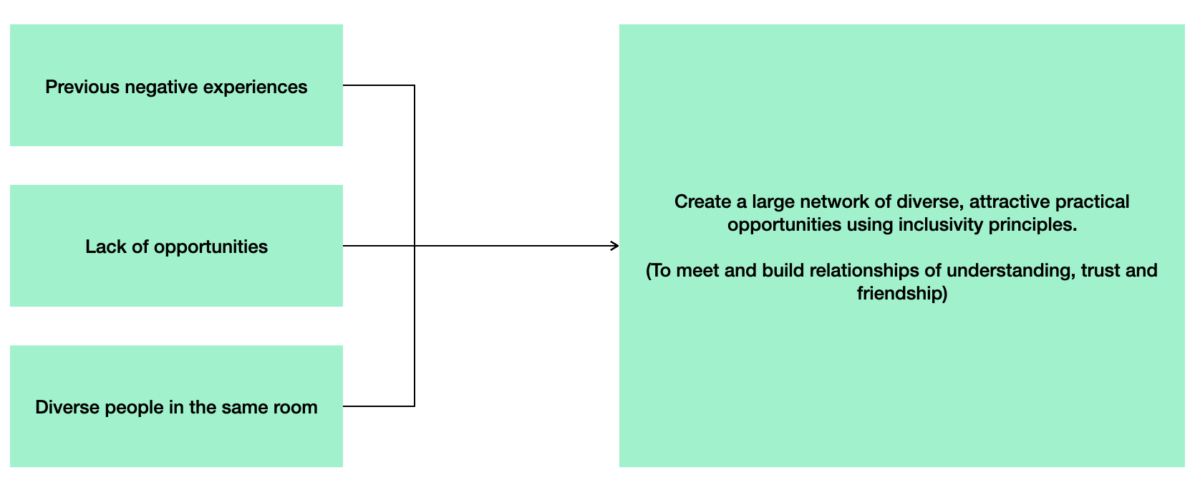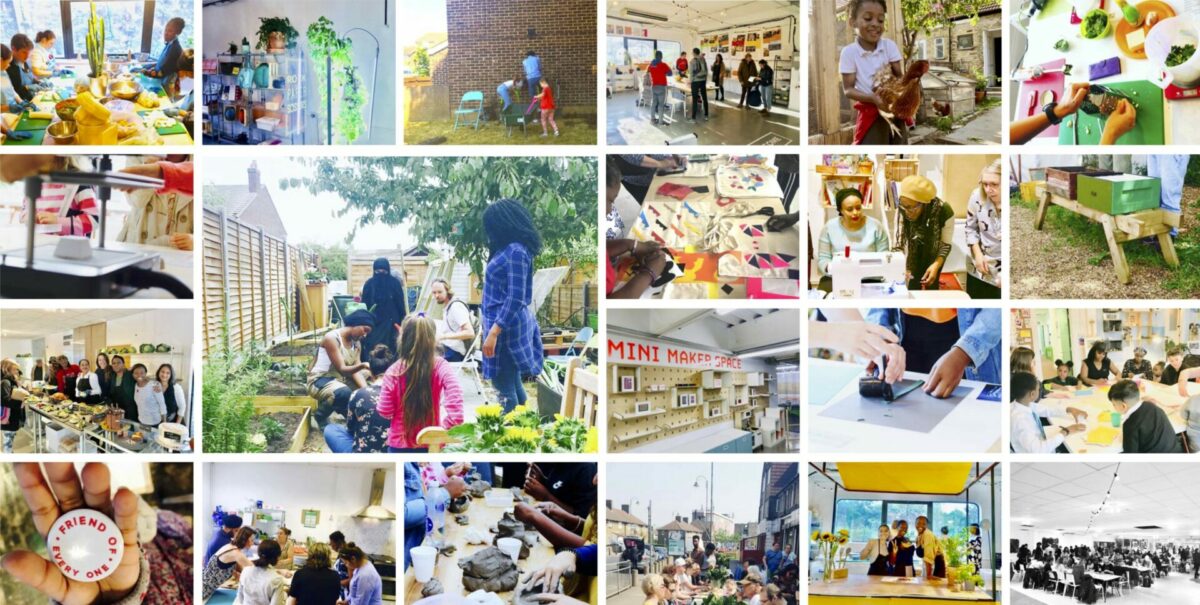Designing neighbourhoods for cohesion
There’s often talk, including here, of the importance of citizen involvement, mobilization, organisation, support, basically of people coming together. But we also know that inequality and divisiveness is present and growing in many places. So how can neighbourhoods bridge that gap between the current state of things and the communal goals we know are needed? Tessy Britton of Participatory City knows a thing or two (or hundreds) about doing just that and gives an excellent introduction to how organizations can design neighbourhoods for cohesion.
Building social cohesion needs people to leave the comfort of their homes, or the segmented spaces of clubs, work, services etc — to venture out into new types of shared social spaces. It needs conversation and productivity for the context and opportunity for friendship and trust to flourish between people. […]
Richard Sennett, in his book ‘Together: The Rituals, Pleasures and Politics of Cooperation’, makes the case for learning how to cooperate across our differences. He highlights that modern society has weakened cooperation through inequality, labour patterns and separation. [Emphasis mine.]
She presents us with the inclusivity principles and some of the research and analysis they have done to validate and perfect their method.
First comes the goal of overcoming previous negative experiences of prejudice. Not all exclusions are as long-lasting or systemic as others, but everyone has experienced some form of prejudice and that reduces their tolerance to social risk. Different activities entail less risk for different people.
Second comes lack of opportunities, even great organizations often have a limited number of activities one can engage in and, even if inadvertently, all are segmented in some way that excludes some people.
Third, every aspect of these events / meetings / activities needs to be designed with the intent to welcome a diversity of people in the same room.

The result of these principles, which seems relatively unusual to me, or at least not commonly seen, is the idea of multiplying opportunities for people to engage, especially by varying their ‘shape’ so more people feel welcome. Organizers often elect to pour all their energy in one moment, Participatory City operates through time, to multiply varied opportunities.
It is the only approach I know that systematically co-creates a vast number of diverse practical opportunities, of every conceivable size and shape, as close as possible to where people live, built into the grain of everyday life.
And it is the only approach I know that is this successful at inviting and supporting individuals to overcome their most natural of human instincts — to stay away from social risk.
On first read, it might seem like a lot more work, and it definitely is, but their method is also proven and, according to Britton, results in more creative participation from a more diverse and involved group of people. So perhaps on second reading, it’s a more structured and purposeful way of organizing, one that puts forward the needs of the people invited, and the agenda of the organization second. In the end, both benefit.
[B]uilding social cohesion across differences requires a lot. It requires the co-creation of a vast number of diverse opportunities, it requires that these are widely and well communicated, and requires the individual to overcome their most natural of human instincts to stay away from social risk. And when all that is achieved, the time that people spend together, on an equal footing, doing hands-on activities together, has to be enjoyable and productive. It has to be creative and fun. It has to be friendly, welcoming and inclusive.

